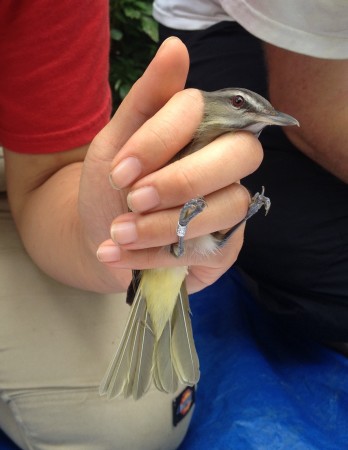
This story begins with a couple of biologists, from Montana and Winnipeg, meeting by chance in Hawai’i, and ends in Grenada – though this is an ending that is really a beginning. In this blog I’m going to focus on a banding project that students and I started in November 2015. But first, to really appreciate the serendipity that brought us to this point, I have to tell you about how I, a conservation biologist from the University of Manitoba, came to this little paradise.
At The Wildlife Society conference on Hawai’i in 2011, I hoped to catch a glimpse of some of the endemic species that generally avoid the resort-laden perimeter of the island, so when I overheard another attendee asking where she could go to see birds, I introduced myself. We decided on the spot to rent a car together to check out the island, and spent a delightful day snorkelling and visiting local coffee plantations. I had had the good luck to meet Dr. Andrea Easter-Pilcher, a professor who was originally from Montana, and now teaches at St. George’s University (SGU) in Grenada. Andrea is also an active member of BirdsCaribbean and was on the organizing committee for the 19th Regional Conference held at SGU in July 2013. During our drive we hatched a plan to bring Canadian students down to Grenada, which in 2014 was realized as a field course (we will be returning for another field course in 2017).
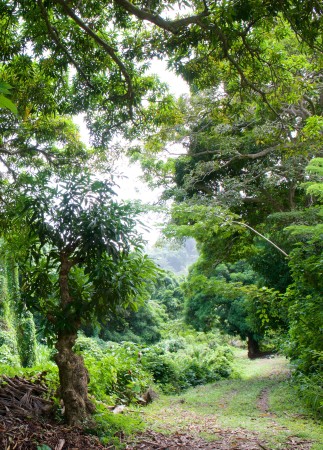
This collaboration has naturally developed further into a fledgling research program. In April 2016 we will be starting our first big field season, with 3 graduate students starting or continuing different projects. However, we initiated this program in November 2015, when we started a mist-netting and banding project focussing on passerines and near-passerines in three sites spread across Grenada’s rural habitats.
Myself, four graduate students (Paulson Des Brisay, Chelsea Enslow, Alexandra Heathcote and Christoph Ng) and Paula Grieef, bander-in-charge from Oak Hammock Marsh, Manitoba, participated in the initial banding period. We were welcomed with open arms by our amazing partners. Initially we stayed with Claudette David (of SPECTO, an environmental NGO) at High Hopes Villa in Bathway. We had the most wonderful time getting to know Claudette and many additional volunteers and staff from SPECTO. We mist-netted and banded in gardens, orchards and cocoa plantations both at High Hopes and at Belmont Estates, an award-winning organic plantation and agri-tourism destination nearby. Shadel Nyack Compton, owner of Belmont, and her staff were just as welcoming as Claudette. Finally, we moved to a more southern cocoa and mixed-species plantation at a small farm in St. David, where we had the pleasure of working with Shelley Roberts and Phillip Patrick of Little Cocoa cottage.
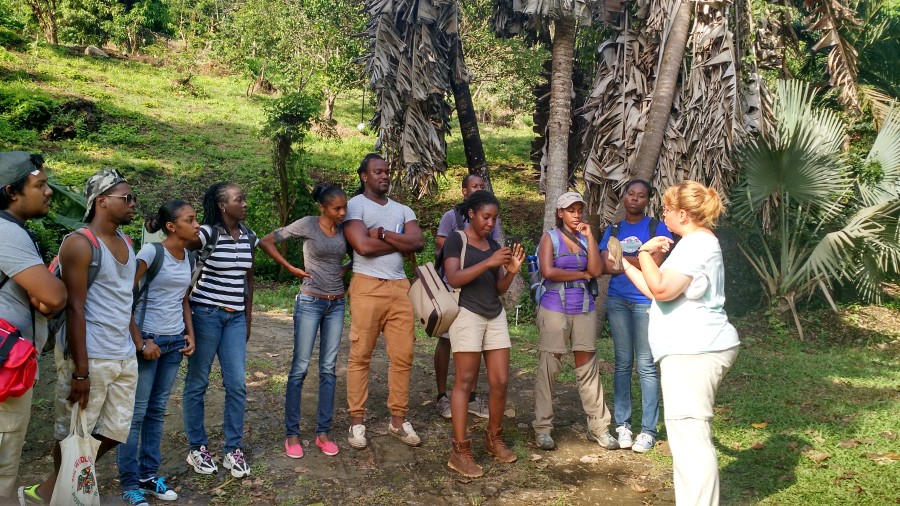
In November we banded 244 individuals of 14 species, including Lesser Antillean Tanagers, Antillean House Wrens, Lesser Antillean Bullfinches, and many other passerines of forest-agriculture ecosystems. Even though we only banded for a couple of weeks so far, we have found interesting results. Between 50 and 100% of the individuals of every species we captured were in active moult, a much higher rate than we expected in November. Many species showed morphological differences relative to other populations that have been reported in the literature. We are really excited to be back banding in April and May this year, so that we can increase sample sizes, compare body condition between rainy and dry seasons, and get a better handle on moult and breeding periods.
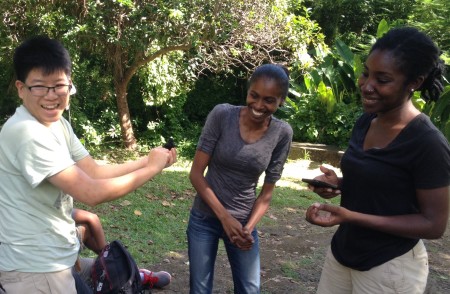
We also contributed to the training of a class of students, taught by Dr. Miya Warrington, at St. George’s University. Miya’s class in ecological methods joined us at Belmont Estates and learned about mist-netting and banding a variety of different species. We have many plans to collaborate further with SGU to work towards learning about and conserving many of Grenada’s bird species. Our research lab group has already included two Masters students who are graduates of SGU’s marine, wildlife, and conservation biology program (Ezra Campbell and Jody Daniel, who served as Chairs of the organizing committee of the 2013 BirdsCaribbean Conference), and we have plans to integrate more SGU students and grads into our research activities. This has been a great opportunity to increase the international composition of the University of Manitoba’s graduate programs, while also contributing to the education and training of Grenadians.
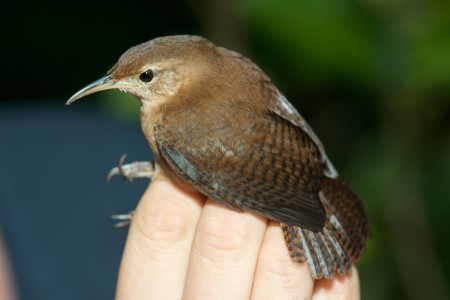
One of the best parts of the trip was realizing how interested the local community members are in conservation of their birds. In St. David, lots of locals stopped to chat as they saw us banding near roads, and offered us encouragement for our work. Claudette and several of her staff, especially Valdon Paul and Shaundel Franklyn, participated in many of our banding activities, and showed great delight in seeing many different species up close. Shadel and her staff were also really engaged in our research, and were grateful that we chose to work at Belmont – indeed, this collaboration has been so wonderful that we’ve planned to collaborate further this year, participating with them and their visitors on activities for the 2026 Caribbean Endemic Bird Festival, as well as further banding. This response makes me even more excited about our research and our ongoing collaborations with Grenadian communities, and I continue to be grateful for the fates that brought Andrea and I together on that lucky day in Hawai’i. Stay tuned for more reports on our findings from the Spice Isle!
